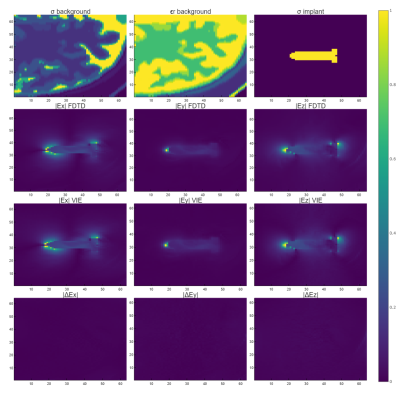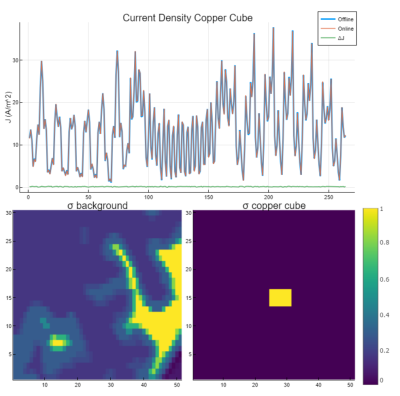Peter Stijnman1, Bart Steensma1, Cornelis van den Berg1, and Alexander Raaijmakers1,2
1Computational Imaging, UMC Utrecht, Utrecht, Netherlands, 2Biomedical Engineering, Eindhoven University of Technology, Eindhoven, Netherlands
1Computational Imaging, UMC Utrecht, Utrecht, Netherlands, 2Biomedical Engineering, Eindhoven University of Technology, Eindhoven, Netherlands
We propose an extension to a method to quickly calculate the scattered RF-fields around implants and dielectric pads. The electric fields have a maximum error of 3.2% w.r.t. FDTD, while being a 106 times faster. Eventually, we want to use this method for patient-specific RF-safety assessment.

The top row shows the dielectric of Duke's brain and the implant that is added. The row below shows the electric field components as computed by FDTD. Using the current density profile that results from the inverse calculate from Equation 1 as input for the function $$$f(\cdot)$$$ we obtain the electric field as shown in the third row. Finally, the bottom row shows the difference between the field components. All the fields are shown using the same arbitrary unit scale.

Equation 1 is solved for a small copper implant using the proposed method. The resulting current density profile is compared between the offline (using $$$Z$$$) and online (using $$$f(\cdot)$$$) versions of this method. The background conductivity and the conductivity of the copper cube are shown in the bottom row.